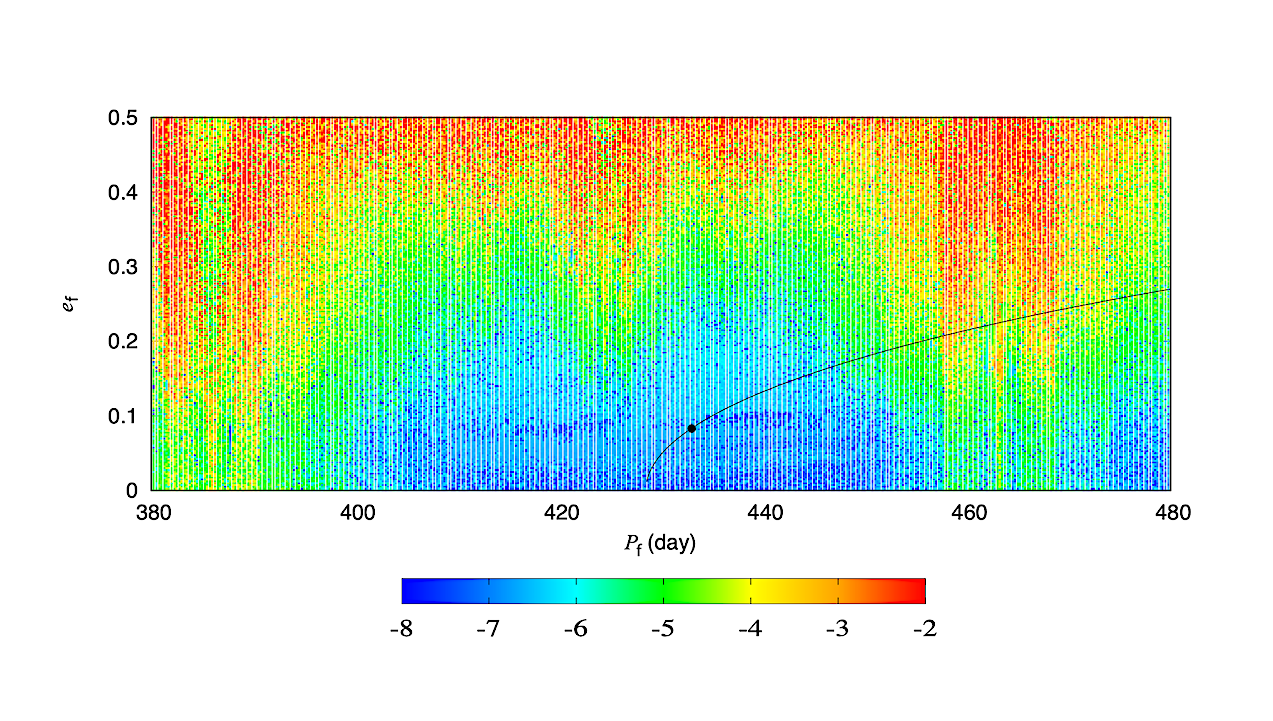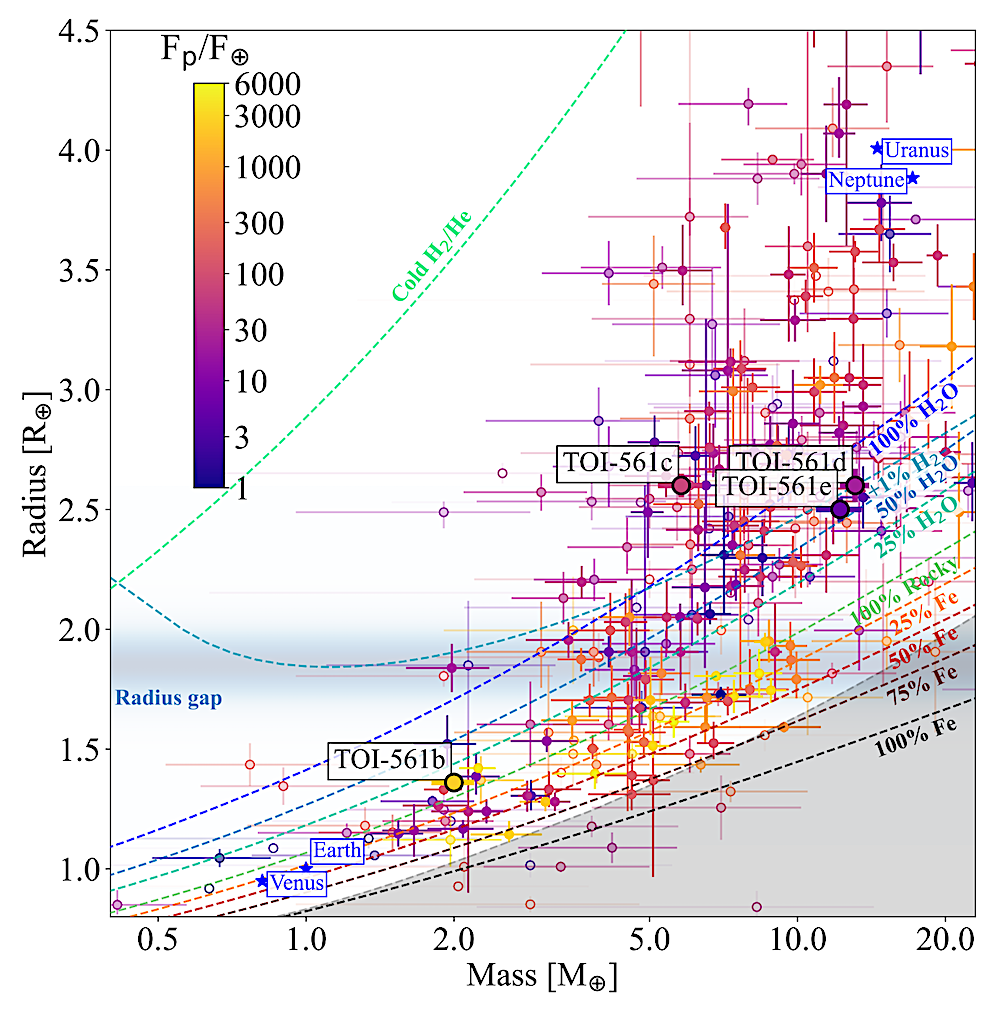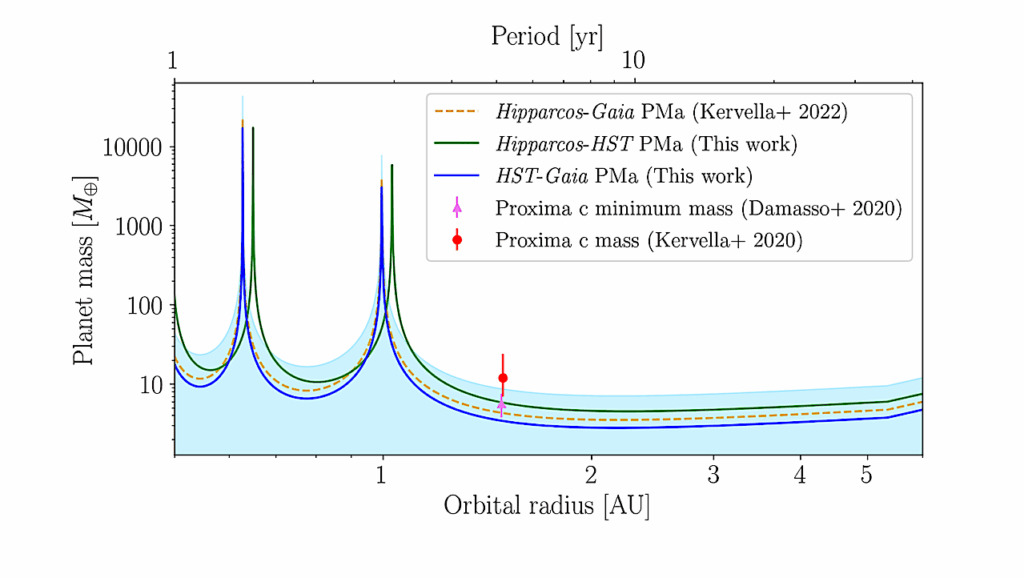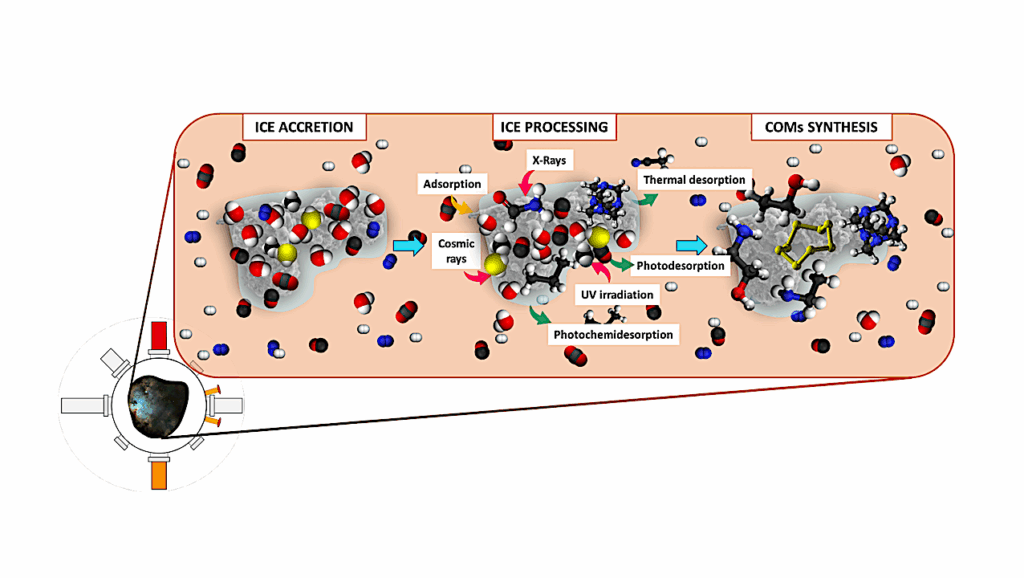Architecture Of TOI-561 Planetary System

We present new observations from CHEOPS and TESS to clarify the architecture of the planetary system hosted by the old Galactic thick disk star TOI-561.
Our global analysis, which also includes previously published photometric and radial velocity data, incontrovertibly proves that TOI-561 is hosting at least four transiting planets with periods of 0.44 days (TOI-561 b), 10.8 days (TOI-561 c), 25.7 days (TOI-561 d), and 77.1 days (TOI-561 e) and a fifth non-transiting candidate, TOI-561f with a period of 433 days.
The precise characterisation of TOI-561’s orbital architecture is interesting since old and metal-poor thick disk stars are less likely to host ultra-short period Super-Earths like TOI-561 b. The new period of planet -e is consistent with the value obtained using radial velocity alone and is now known to be 77.14399±0.00025 days, thanks to the new CHEOPS and TESS transits.
The new data allowed us to improve its radius (Rp=2.517±0.045R⊕ from 5% to 2% precision) and mass (Mp=12.4±1.4M⊕) estimates, implying a density of ρp=0.778±0.097ρ⊕.
Thanks to recent TESS observations and the focused CHEOPS visit of the transit of TOI-561 e, a good candidate for exomoon searches, the planet’s period is finally constrained, allowing us to predict transit times through 2030 with 20-minute accuracy.
We present an updated version of the internal structure of the four transiting planets. We finally performed a detailed stability analysis, which confirmed the long-term stability of the outer planet TOI-561 f.

Mass-Radius diagram for TOI-561 system. The data are taken from the Extrasolar Planets Encyclopaedia catalog (http://exoplanet. eu/catalog/) as of May 2024. The TOI-561 planets are labeled and updated with the analysis in the current work. The theoretical mass-radius relationship as a function of the chemical composition (Zeng et al. 2019) are shown in dashed colored lines. The shaded grey region represents the forbidden region predicted by collisional stripping (Marcus et al. 2010) — astro-ph.EP
G. Piotto, T. Zingales, L. Borsato, J. A. Egger, A. C. M. Correia, A. E. Simon, H.-G. Florén, S. G. Sousa, P. F. L. Maxted, T. G. Wilson, Y. Alibert, V. Adibekyan, A. Bonfanti, R. Luque, N. C. Santos, M. J. Hooton, L. Fossati, L. M. Serrano, A. M. S. Smith, S. Salmon, G. Lacedelli, R. Alonso, T. Bárczy, D. Barrado Navascues, S. C. C. Barros, W. Baumjohann, T. Beck, W. Benz, N. Billot, A. Brandeker, C. Broeg, A. Collier Cameron, Sz. Csizmadia, P. E. Cubillos, M. B. Davies, M. Deleuil, A. Deline, O. D. S. Demangeon, B.-O. Demory, A. Derekas, B. Edwards, D. Ehrenreich, A. Erikson, A. Fortier, M. Fridlund, D. Gandolfi, K. Gazeas, M. Gillon, M. Güdel, M. N. Günther, A. Heitzmann, Ch. Helling, K. G. Isaak, L. L. Kiss, J. Korth, K. W. F. Lam, J. Laskar, A. Lecavelier des Etangs, M. Lendl, P. Leonardi, D. Magrin, C. Mordasini, V. Nascimbeni, G. Olofsson, R. Ottensamer, I. Pagano, E. Pallé, G. Peter, D. Pollacco, D. Queloz, R. Ragazzoni, N. Rando, H. Rauer, I. Ribas, G. Scandariato, D. Ségransan, M. Stalport, S. Sulis, Gy. M. Szabó, S. Udry, S. Ulmer-Moll, V. Van Grootel, J. Venturini, E. Villaver, N. A. Walton
Comments: 13 pages, 10 Figures. Accepted on MNRAS
Subjects: Earth and Planetary Astrophysics (astro-ph.EP)
Cite as: arXiv:2410.18169 [astro-ph.EP] (or arXiv:2410.18169v1 [astro-ph.EP] for this version)
https://doi.org/10.48550/arXiv.2410.18169
Focus to learn more
Submission history
From: Tiziano Zingales
[v1] Wed, 23 Oct 2024 18:00:00 UTC (9,784 KB)
https://arxiv.org/abs/2410.18169
Astrobiology,








